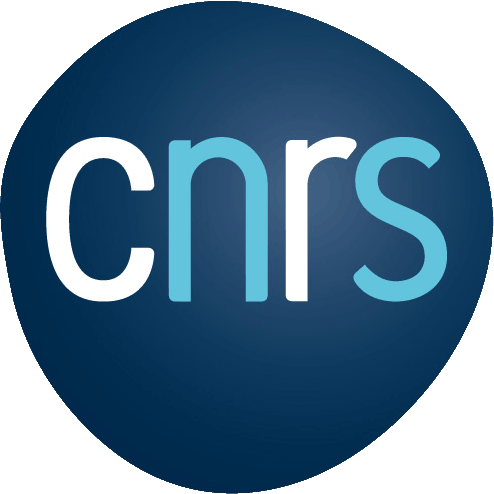Offre en lien avec l’Action/le Réseau : – — –/– — –
Laboratoire/Entreprise : LIFO, Orléans, France
Durée : 1 year (around 2600€
Contact : marcilio.desouto@univ-orleans.fr
Date limite de publication : 2025-04-04
Contexte :
The JUNON project is granted from the Centre-Val de Loire region through an ARD program (Ambition Recherche Développement). The project is lead by BRGM (Bureau de Recherches Géologiques et Minières) and involvesUniversity of Orléans (LIFO), University of Tours (LIFAT), CNRS, INRAE, ATOS and ANTEA companies. The main goal of JUNON is to develop digital twins to improve the monitoring, understanding and prediction of environmental resources evolution and phenomena, for a better management of natural resources. Digital twins will allow us to virtually reproduce natural processes and phenomena using combinations of AI and environmental tools. They will rely on geological and meteorological data (time series) and knowledge, as well as physical-based models.
JUNON project is organized into 5 work packages (WP):
1. User’s needs and geological knowledge for ground water
2. User’s needs and biological/chemical knowledge about pollutants and greenhouse gases
3. Data management and data mining
4. Times series predictions
5. Aggregation and realization of digital twins
The postdoc program will be supervised by LIFO-CA and will be in WP4, focusing on time series forecasting. There will be strong interactions inside WP4 with other postdocs and PhD in LIFO or LIFAT, with WP1 and WP3 (BRGM) with engineers. The CA team is a dynamic team with 9 PhD students. We work on Machine Learning, Data Mining and Deep Learning and are interested, among other things, in knowledge integration and explicability in ML/DM methods.
Sujet :
In many domains, various algorithms can be considered candidates for solving particular problems. One of the most challenging tasks is to predict when one algorithm is better than another for solving a given problem. Traditional approaches to predicting algorithm performance often involve costly trial-and-error procedures. Other approaches require specialized knowledge, which is not always easy to acquire.
Meta-learning approaches have emerged as effective solutions, capable of automatically predicting algorithm performance for a given problem (Bradzil et al., 2022;Vanschoren, 2019). Thus, such approaches could help non-expert users in the algorithm selection task. There are different interpretations of the term “meta-learning”. Here we use the term “meta-learning” to refer to the automatic knowledge generation process that relates the performance of algorithms – in particular machine learning and data preprocessing techniques – to the characteristics of the problem (i.e., the characteristics of its datasets).
As an automatic algorithm selection technique, meta-learning does not imply being limited to machine learning algorithms. Therefore, the application of this approach to “classical” predictive models is also envisaged. This typically requires the intervention of experts to parameterize these models in order to build the set of metadata necessary for the “meta-learner”. The BRGM in particular and, more broadly, the consortium of this proposal, has many forces capable of parameterizing these different models (empirical, physical or statistical), thus opening the scope to all environmental predictive techniques.
By using meta-learning, our objective is therefore to provide a framework for linking a set of time-series data representing an environmental problem, possibly associated with a priori knowledge, with a pipeline of data mining algorithms (e.g., preprocessing and supervised learning algorithms). In particular, it will aim to give environmental experts a certain autonomy, in the context of the construction of digital twins, and thus limit their dependence on digital experts on this issue (Garcia et al., 2018; Talkhi et al., 2024).
Bibliography
Brazdil, P., Van Rijn, J. N., Soares, C., & Vanschoren, J. (2022). Metalearning: applications to automated machine learning and data mining. Springer Nature.
Garcia, L. P., Lorena, A. C., de Souto, M. C., & Ho, T. K. (2018, August). Classifier recommendation using data complexity measures. In 2018 24th International Conference on Pattern Recognition (ICPR) (pp. 874-879). IEEE.
Talkhi, N., Akhavan Fatemi, N., Jabbari Nooghabi, M., Soltani, E., & Jabbari Nooghabi, A. (2024). Using meta-learning to recommend an appropriate time-series forecasting model. BMC Public Health, 24(1), 148.
Vanschoren, J. (2019). Meta-learning. Automated machine learning: methods, systems, challenges, 35-61.
Profil du candidat :
– Good experience in data analysis and machine learning is required.
– Experiences/knowledge in time series prediction and environmental science are welcome.
– Curiosity and ability to communicate (in English or French) and to work in collaboration with scientists in environmental science.
– Ability to propose and validate new solutions and to publish the results.
– Autonomy and good organizational skills.
Candidates are invited to send a pdf file that contains:
– A short CV, with descriptions of your thesis and experiences in machine learning, including deep learning(including projects you were involved in)
– A motivation letter
– contact information for two references
– Deadline for submission of application: March 15th, 2025.
Formation et compétences requises :
PhD in machine learning (computer science or applied mathematics)
Adresse d’emploi :
LIFO (Laboratoire d’Informatique Fondamentale d’Orléans) – Constraints and Machine learning (CA) team.

